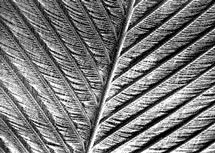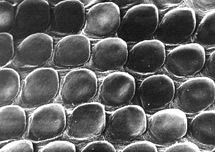Did Dinosaurs Turn Into Birds?
Hall of Life—Dinosaur Exhibits
on February 22, 2016In addition to the biblical teaching, there are many scientific problems with the dino-bird idea.
- The lungs of reptiles and birds are structured differently. Dinosaurs (reptiles) have bellows-like lungs (the air is pumped in and out), as humans do. Birds have a circulatory lung, in which the air flows through the lung, without being pumped. Evolutionist Dr. Michael Denton has said, “It doesn’t require a great deal of profound knowledge of biology to see that for an organ which is so central to the physiology of any higher organism, its drastic modification in that way by a series of small events is almost inconceivable. This is something we can’t throw under the carpet again because, basically, as Darwin said, if any organ can be shown to be incapable of being achieved gradually in little steps, his theory would be totally overthrown.” (See www.answersingenesis.org/evidence-for-creation/design-in-nature/blown-away-by-design/.)
- According to evolutionist Dr. Alan Feduccia, “New research shows that birds lack the embryonic thumb that dinosaurs had, suggesting that it is ‘almost impossible’ for the species to be closely related.” (The Cincinnati Enquirer, October 25, 1997)
- Birds have streamlined bodies, enabling them to be efficient flyers. In addition, most have hollow bones, which make them lightweight, and which are part of their respiratory system. They also have powerful flight muscles. Reptiles lack these features.
- Although some museums may claim that feathers are merely modified scales, careful research has shown this is not true.


Images from The New Answers Book 1
Feathers (top) and scales (bottom) are not similar.
Anatomist Dr. David Menton describes the most fundamental difference between feathers and scales: “The feather grows out of a follicle. A follicle is a tubular down-growth of the epidermis that protrudes deeply into the skin—all the way down to underlying bone in the case of primary feathers. And this tube of specialized living skin produces the feather inside of itself from a growth matrix at the very bottom. The reptilian scale has absolutely nothing to do with follicles. All of the scales can shed as a sheet because they’re nothing but folds in the epidermis, like fabric folded over on itself, whereas feathers would have to come out of their own follicle.” (“Bird evolution flies out the window,” Creation 6(4), September 1994, pp. 16–19.) Add to that the findings by evolutionists: “At the morphological level feathers are traditionally considered homologous with reptilian scales. However, in development, morphogenesis, gene structure, protein shape and sequence, and filament formation and structure, feathers are different.” (A.H. Brush, “On the origin of feathers,” Journal of Evolutionary Biology 9, 1996, pp. 131–142.)
Related Media
Let There Be Truth: Doesn’t Fit

Museum Guide
Are you exasperated by all the hype about "millions of years" in secular museums? The Museum Guide will help!
Browse Kids BookRecommended Resources
- © 2024 Answers in Genesis
- Privacy Policy
- Contact
- About



